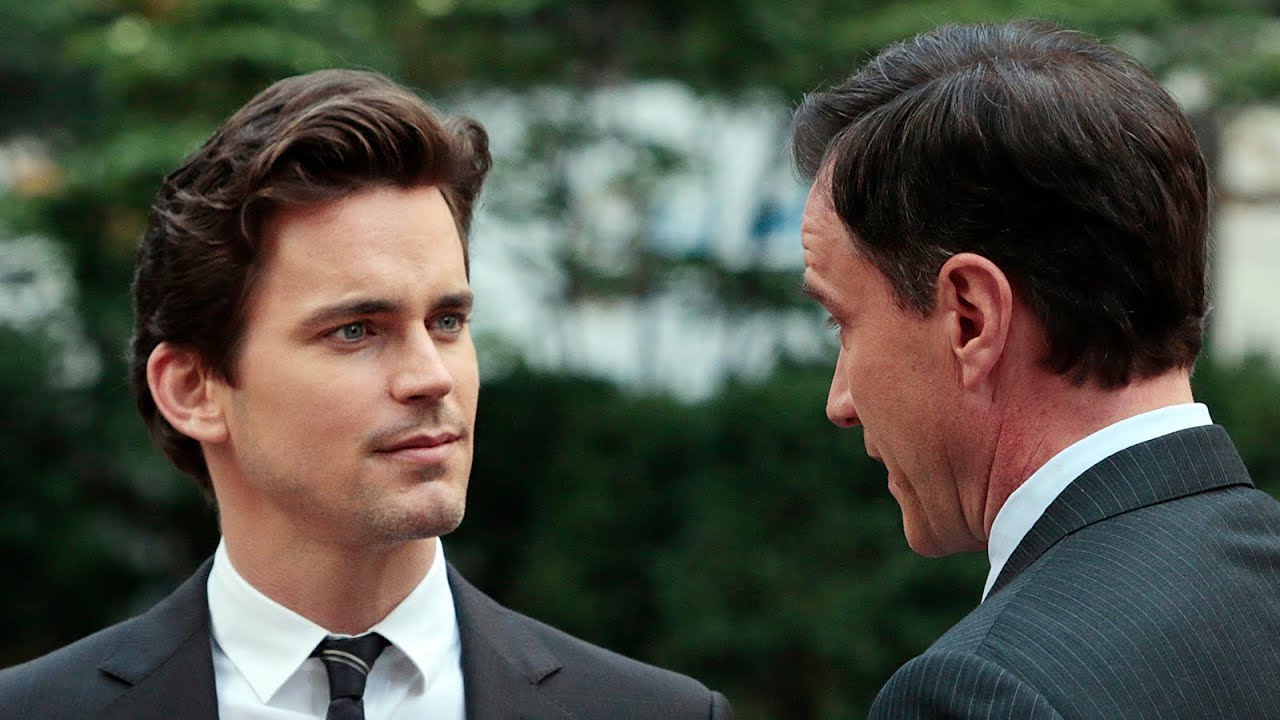As a general rule it has always been unwise to take Netflix at its word about how popular some bit of Netflix programming is. This is only in part because there has always been no choice but to take Netflix at its word, given that it refused to offer even the people who make the shows and films that lengthen its menus and plump out its grim adjectival categories anything more than the most cursory sense of how much their work has been seen. There has never been a compelling reason for Netflix or other streamers to tell the truth, and so there has never been a good reason to assume they would.
This is the nature of things in the endless and brutal end of this particular free market cycle. It's a time of omens and signs and stilted new metrics and growth beyond growth. Netflix and the rest of its cohort's business depends upon telling the sort of weird lies that investors find convincing, or merely amusing enough to believe, every bit as much as it does upon making shows and films that people actually want to watch. Numbers that are obviously, deliriously untrue are presented to the public seemingly as a dare, or just for the pure Trumpy pleasure of saying a very large figure aloud, or as John Herrman writes at New York, "as an expression of secrecy, its flagrant disclosure a reminder that real transparency is off the table."
This sounds, in the abstract, almost admirably deranged—capitalism finally, blusteringly becoming art in the moments before it collapses under its own cynicism. It isn't nearly as amusing in practice; like any bit of contemporary business fuckery considered at scale, it is disorienting and exhausting for those on the receiving end, whether those are people trying to get paid fairly for their work or just someone trying to figure out what is actually happening in any of the many spaces that now operate behind this veil of fudge.
"The main demands of SAG and AFTRA, the writers and actors unions that have been striking against these companies for more than 100 days now, are that they be compensated based on some meaningful metric of how often their content is viewed," the critic Vince Mancini wrote earlier this month. Streamers resisted that not just because they are opposed to compensating talent on principle, which they also absolutely are, but because they have grounded their businesses in those same unverifiable metrics. The ability to say whatever they want, which these companies arrogated for themselves years ago and have abused lustily ever since, first gave them a strange sort of leverage, then started to seem more like a hazard.
The people and institutions that used to run the industry were not really much less cretinous, calculating, or brutal than the ones that currently do, but they did much more of their business in public, and with the sort of zesty scuzz that passes for color in retrospect. The tech industry and Wall Street types currently atop that system are, among other things, both less confident in their ability to make money in what has historically been a very lucrative business and less willing to be held accountable for how well they are or aren't doing that. All of them, always, have lied; that's business. But the new lords of this old estate don't really seem to know their way around it, or care enough to learn. They very much do not want to do things like admit how many people are or aren't watching the stuff they make, Mancini writes, "because then they’d have to admit something that we all basically already know: The numbers are all fake." This is why the Writers Guild of America made it such a priority for members to see those numbers, and be compensated accordingly. That right is one among many that the union secured through the contract that their strike won.
The industry's longstanding and quite possibly load-bearing reality issues seem likely to persist, though. Free from the crass objectivity of box office or ratings numbers, streamers can and do say whatever they want as a way to test what investors and the broader public will believe. This sort of vanity metric abuse has been going on for some time in a number of industries; no real limit has been found yet. It is hard to know what to do with facially unconvincing proclamations that, say, every living person on earth watched Bird Box precisely 1.4 times during its first 10 days of release, but "believing it" is easily the most demeaning option.
Unlike most of its cohort of disruptors, Netflix actually does turn a sizable profit; that much can be quantified. But like many of those peers, it does this less through creating anything that people actually love or even really like than by leveraging older, better shows that it added to its library on the cheap. There's not a lot of heroic disruption in functioning as a rentier platform that furnishes subscribers with stuff that they already enjoyed elsewhere, but it is a very good business.
The problem is that, if streaming is going to replace television as it has previously existed in the way that streamers and studios and networks all seem to believe it will, someone is going to have to make shows that make people want to watch streaming services in the way that they've traditionally watched television. Cable channels are moving away from making shows like this, and seem content to ride out the end of their era running Horrible Bosses 2 back-to-back on every channel; the big networks are making fewer scripted shows every year. Streamers have naturally gravitated toward the high and low ends—the veneer of prestige that production value and star quality provide, and which money can buy, and the depraved bleeding edge of reality programming that comes more naturally to them, respectively. They have struggled with the crucial middle, the formulaic, competently made programming that people watch and enjoy because it is on. The Chicago Tribune critic Nina Metz calls this "background TV."
The standardized Nielsen ratings that are just now coming into existence for streaming help make the business a little more legible. One thing that both Nielsen and Netflix agree upon, for instance, is that the platform's subscribers spent the entire summer absolutely streaming the dickens out of the former USA Sexy Lawyer Drama Suits. In the absence of anything more trustworthy than the industry's own dubious words and numbers, it's worth wondering what that might mean.
The one certainty for businesses that find themselves in the hands of contemporary corporate-raider types, even beyond the very high likelihood of things ending badly, is that the business will do less of whatever it does. There are new bosses and often towering new debts to pay, and those will always come first. More than that, though, there is a shrinking and flattening that comes with being owned by people whose interests, on balance, are themselves notably small and flat. Every business these people touch winds up cheapened, worsened, and dispiritingly similar in its overall enfeeblement as a result. This, more than any heroic acts of innovation or creative destruction, is where the market is right now—driven to find just how diminished and demeaning a version of a once-useful service people are still willing to pay for.
This is just business, or something more like looting flying under the same flag, but it feels ideological—whatever David Zaslav's executive gambit was in folding HBO into MAX, it felt like an attempt to reset expectations such that no one would ask or expect too much from the future. The labor response also felt ideological—it is ideological, in its insistence on reclaiming a fair share for the people that actually make the things that the business guys sell—but it is much easier to parse. Labor wants to work and get paid for it; management's desire not to allow any of that, to the exclusion of concerns like what would even be left to sell, has seemed to supersede anything else.
To the extent that it's possible to tease out a vision of the sort of programming that the ruling streamers and studios actually want to make, the answer is mostly stuff that is 1) cheap and 2) adequate. The transparent disposability of the identikit true-crime documentaries and off-vibe reality programming filling out most streaming services seems, in some sense, both inevitable and intentional. They were made not just to be forgotten, but to be half-ignored; to be popular enough to be profitable, but not so popular that it creates any kind of expensive new commitment.
It's cyclical—television made by companies that seem not to like making television, designed not so much to be enjoyed by viewers as tolerated by them, in an attempt to recreate the passive experience of watching television for people actively paying a monthly subscription fee. "I’ve heard from showrunners who are given notes from the streamers that 'This isn’t second screen enough,'' the actress and filmmaker Justine Bateman told The Hollywood Reporter back in July. "Meaning, the viewer’s primary screen is their phone and the laptop and they don’t want anything on your show to distract them from their primary screen because if they get distracted, they might look up, be confused, and go turn it off."
That sounds bleak, and it is. But, as with so many of the decisions that these companies have made, it reflects an obtuseness so wild as to be almost inspiring. The people who have taken on the task of killing and replacing the media that people watch seem to have not just a strange and broken idea of how that might work, but why people watch it in the first place.
There isn't really a new idea to be found here, let alone anything that qualifies as improvement. The broader plan seems mostly to amount to continuing the industry's self-authored decline, just on more favorable terms—to fuck it all up again, in more or less the same ways, just on new platforms and with new technology and fewer obligations to the people that make the stuff they sell. The seams in this plan are already visible and straining; in a report on declining subscription numbers for cable and streamers, Techdirt notes that "as the streaming sector pursues quarterly growth, it’s increasingly adopting the kind of tactics that made cable TV so unpopular: relentless price hikes, shitty labor practices, and annoying new restrictions on usage."
This grasping laziness helps explain why the content the streamers extrude is so strikingly similar to what already exists, but also flimsier, cheaper, and worse. They don't know what to do or what to make, in short, because the people in charge fundamentally don't know or care about what people want to watch, or why. That lack of respect for the work or its audience does not so much permeate through the result as tear through it like a tumbling hollow-point bullet.
Which brings us back to Suits. It is safe to say that none of the people involved in making Suits, or any of the many fizzy, stylish, goofy original shows like it that aired on the USA Network during the previous decade, got a note about making the show "more second screen." But before that concept devoured the industry, that's what these shows were—clever, appealing-looking diversions designed to ask less of their viewers than they offered over the course of long seasons, made by people who understood what they were doing in both the technical and existential sense. It's incorrect to describe shows like these as unambitious, although no one involved with making, say, White Collar—the supreme USA Network program in our household's estimation—seemed convinced that they were making high art. It's more that the ambitions were comprehensively understood; the idea was to create something twisty, busy, and fun. If those are also words that you might use to describe stylish wallpaper, they're also active—the formulaic USA shows that make such great background television were, crucially, not made with only that in mind.
You know these shows, even if you haven't seen them. "Pretty to look at, but you don't feel bad about how pretty it is," the critic Sarah D. Bunting said of the long-running USA medical/rich-person dramedy Royal Pains on the TV podcast Extra Hot Great. "Diverting but nothing serious. A lightweight Pringle of a show with a shitload of statement necklaces. There's plot, but it's just diverting enough without being taxing or heavy." When those shows stumble at the end of their long runs, it's because they lose effervescence. And when they work, it's because of how the people making them—the craftspeople who know what their jobs are and how to do them—keep them not just light, but bright.
It makes sense that bosses would like to find another way to deliver what those productions produce—talented people are difficult and demanding, and need to be paid for their work. It also makes sense that they can't do it. This was at the root of the industry's AI fantasy, which was another win in the WGA's contract—that somehow this work could be done not well but passably without all those fucking people making it difficult. But it is a fantasy. When the streamers try to do this sort of thing in the way they do—quickly, cheaply, cynically, and with little regard for the people making or watching it—that toxicity shows up downstream. This, I think, is why so much streaming television tends to feel smaller, cheaper, and worse than even mediocre recent cable programming—the airless, optimized, anti-human circumstances of its creation lead to a certain anhedonic artifice and a strange, strained joylessness. The colors are all off.
Streamers find themselves in a strange spot. They're ascendant and rich, but supported by numbers no one believes and almost poignantly incapable of reliably producing their actual stock in trade—the sort of diversion that networks like USA used to make, to no great fanfare or consequence, just a decade ago. The streamers have those shows, and haven't had to pay anything like industry-standard residuals to the people that made them, but they can't figure out how to reproduce them. They throw hundreds of millions of dollars at this challenge, with the guidance of industry-leading algorithms and efficiencies, and Gal Gadot just HALO-jumps into the gray over and over again.
The shows that people watch instead—even middling stuff like Suits, the appeal of which amounts to watching good-looking performers in good-looking clothes move briskly through well-appointed spaces while flirting or fighting or whatever—are more style than substance, or anyway more about the energy created by professionals doing their jobs well than anything more specific. Netflix's adjectival tags can't describe this; it's not a genre or a demographic so much as it is a way to see very old machinery put to fitting use by people who know how to make it work. It makes a grimly affirming sort of sense that style and energy, ineffably and inextricably human as they are, would be the last things that this industry's cheesy new lords can't figure out.






